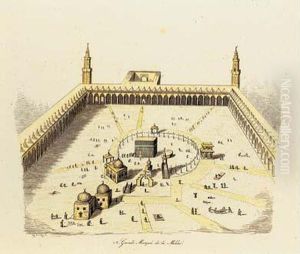Alphonse Boilly Paintings
Alphonse Boilly was a French painter and engraver, recognized for his keen observation of French society and the precision with which he captured the everyday life of his contemporaries. Born on July 13, 1761, in La Bassée, Northern France, Boilly grew up in a time of significant political and social upheaval, which greatly influenced his work and themes. He moved to Paris around 1785, where he quickly became a popular portraitist and genre painter among the French bourgeoisie. Boilly's work is remarkable for its detailed depiction of the social customs, fashions, and attitudes of the late 18th and early 19th centuries.
Throughout his career, Boilly experimented with a variety of styles and subjects, ranging from humorous and satirical scenes to more formal portraits and domestic genre scenes. He had an exceptional ability to capture the nuances of facial expression and the subtleties of social interaction, making his paintings a valuable document of the era's social history. Despite the political changes and turmoil of his time, including the French Revolution and the Napoleonic Wars, Boilly continued to find favor with patrons and the public alike, adeptly navigating the shifting political landscapes.
Boilly's contributions to French art were recognized in his time; he was awarded a medal by the Salon in 1804 and was made a Chevalier de la Légion d'Honneur in 1833. His legacy, however, extends beyond his accolades. He left behind an extensive oeuvre that includes over 5,000 paintings, drawings, and lithographs, offering an unparalleled glimpse into the life of 18th and 19th-century France. Alphonse Boilly passed away on January 4, 1845, in Paris, but his work remains a testament to his profound observation skills and his enduring fascination with the human condition.
